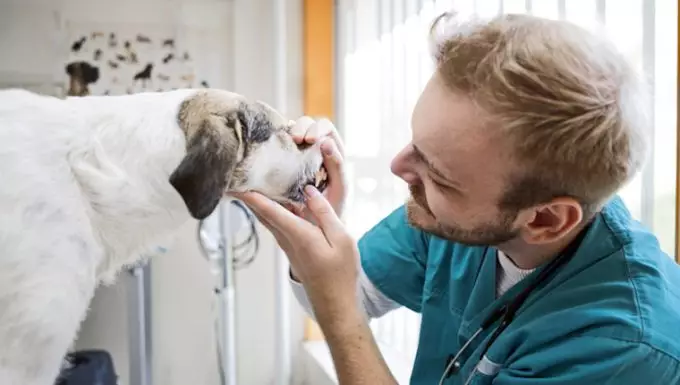Oral chondrosarcoma is a rare but serious form of bone cancer that originates in the mouth of dogs. This condition is primarily characterized by the growth of tumors in the cartilage, which can lead to debilitating effects on the dog’s health. Notably, larger dog breeds are at a greater risk of developing this cancer compared to their smaller counterparts. Furthermore, age plays a significant role, with middle-aged and older dogs being notably more susceptible than younger canines.
Detecting oral chondrosarcoma in dogs requires vigilance, as the symptoms can be alarmingly ambiguous. Common indicators include bad breath, unintentional weight loss, swollen lymph nodes, excessive drooling, difficulty eating, and bleeding from the mouth. As the disease progresses, dogs may also exhibit signs of lethargy, coughing, or sneezing. These symptoms can often overlap with other medical issues, making early veterinary consultation crucial for accurate diagnosis and management.
Currently, the precise cause of oral chondrosarcoma remains unknown, categorized as idiopathic. Research indicates that certain factors may increase a dog’s vulnerability, such as breed and gender: larger breeds and male dogs appear to experience higher rates of the condition. The lack of a defined causal pathway suggests that genetics and environmental factors may play a role, although definitive conclusions remain elusive.
Diagnosis Process
When a veterinarian suspects oral chondrosarcoma, a comprehensive diagnostic approach is initiated. The process begins with a thorough inquiry into the dog’s symptoms and a detailed review of its medical history, considering breed-specific health issues. Following this, the veterinarian conducts a full physical examination. Necessary imaging, like X-rays, may be employed to identify potential abnormalities. The definitive diagnosis usually includes taking a tissue sample for histopathological analysis, which helps confirm the presence of chondrosarcoma cells.
Treatment Options and Recovery
The cornerstone of treatment for oral chondrosarcoma is surgical intervention aimed at tumor removal. In some cases, this may necessitate partial jaw excision, depending on the tumor’s location and size. Post-surgery, dogs typically require oral pain management prescribed by the veterinarian to ensure a comfortable recovery. Pet owners must adhere to medication guidelines rigorously, administering the correct dosage and maintaining the prescribed schedule.
Creating a nurturing and tranquil environment at home is vital for the recovery process. Initially, exercise may need to be restricted, allowing the dog ample time to heal physically and emotionally.
A Community of Care
Pet owners often find themselves anxious when managing a dog’s health challenge like oral chondrosarcoma. Sharing experiences with other owners can provide comfort and insights into managing similar situations. Veterinarians play a critical role not just in treating the condition but also in guiding pet owners through the experience, ensuring optimal recovery and quality of life for their canine companions. Understanding and addressing the challenges of oral chondrosarcoma can lead to improved outcomes and a better quality of life for affected dogs.

